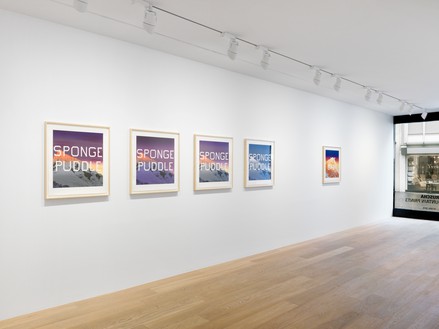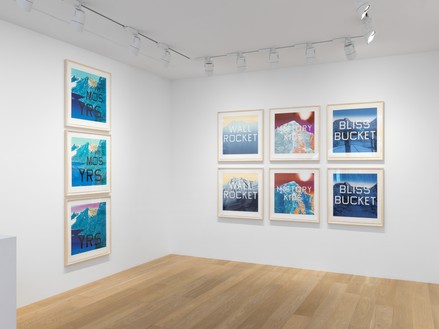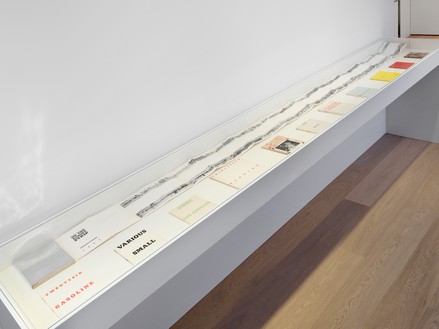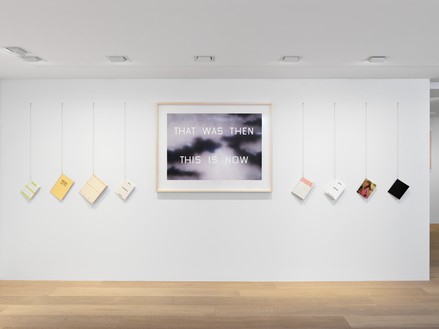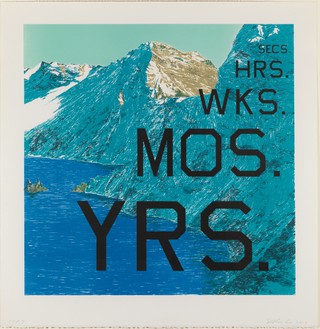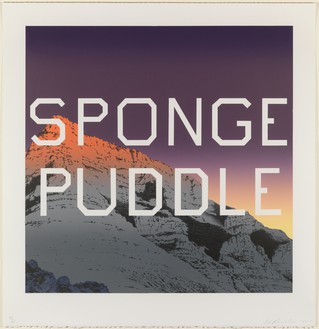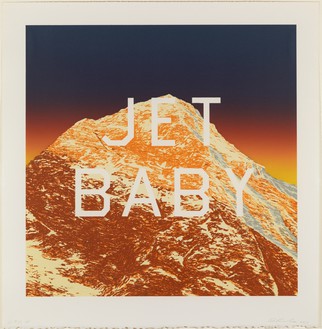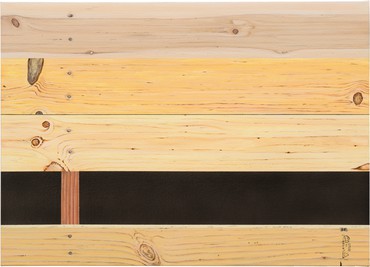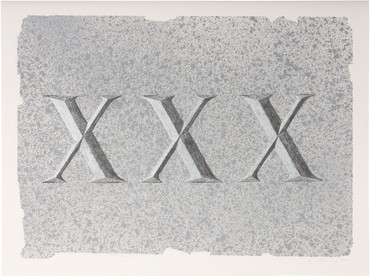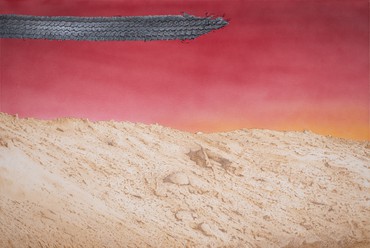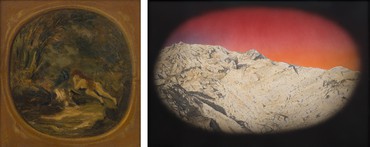About
I had a notion to make pictures by using words and presenting them in some way and it seemed like a mountain was an archetypal stage set. It was a perfect foil for whatever was happening in the foreground.
—Ed Ruscha
Gagosian Geneva is pleased to present the first exhibition exclusively devoted to Ed Ruscha’s Mountain Prints.
More than ten years after the original motif appeared in his distinctive Mountain paintings, Ruscha began producing complementary prints in 2010. Mountain Prints comprises color trial, separation, and cancellation proofs, as well as numbered editions from the limited-edition series; it is a rare opportunity to witness Ruscha’s processual experiments in the print medium.
While attending Chouinard Art Institute (now CalArts) in 1958, Ruscha began an apprenticeship with Saul Marks at Plantin Press in Los Angeles, summoned to the print medium by a desire for experimental collaboration and a commitment to reproducibility. Since 1960, screenprints, lithographs, and etchings have been a key part of his oeuvre. After a collaboration over many decades, Ruscha established Hamilton Press with Tamarind master printer Ed Hamilton in 1990 to focus on traditional lithography. Mountain Prints suggests the ways in which the open exchange of skills and insights has impacted his punchy compositions.
The prints on view are both works from the numbered edition as well as proofs produced between 2010 and 2015 at Hamilton Press. Square-format paper accentuates the central placement of text, each word occupying a new line in contrast to the perspectival recession of the snow-capped mountains. Ruscha has superimposed text upon landscape in his paintings since the 1980s, juxtaposing the symbolic stimulus of the image with text as an atmosphere of speech, sound, and shape. In Mountain Prints, cryptic and humorously banal phrases in white letters, such as “SPONGE PUDDLE” and “BLISS BUCKET,” interrupt the harmony of the stock scenic backdrop. The print process imbues the landscape image with a granular, graphic tactility amplified by vivid combinations of cerulean and cobalt blue, plum, pewter, tawny, and tangerine inks. Subtle mutations between prints recount the active and constant negotiation between artist and printer, author and craftsman. Like the partnership between Hamilton and Ruscha, the achievement of the Mountain Prints proofs is their merger of content and form.
J’avais dans l’idée de créer des images en utilisant des mots et en les présentant d’une certaine manière. Les montagnes m’ont semblé l’archétype de la scénographie. Elles ont servi de parfait écrin pour tout ce qui se passe au premier plan.
—Ed Ruscha
Gagosian Genève a le plaisir de présenter la première exposition entièrement dédiée à la série Mountain Prints d’Ed Ruscha.
Plus de dix ans après l’apparition du motif original dans la série de peintures Mountain, Ed Ruscha commence à réaliser des impressions complémentaires en 2010. Mountain Prints comprend des essais et séparations de couleurs, des épreuves d’annulation, ainsi que des éditions numérotées de la série en édition limitée; c’est une opportunité rare de découvrir le processus d’expérimentation de Ruscha appliqué à l’impression.
Alors qu’il fréquente le Chouinard Art Institute (aujourd’hui connu sous le nom de CalArts) en 1958, Ruscha commence un apprentissage avec Saul Marks aux éditions Plantin Press à Los Angeles: son désir de collaboration expérimentale et de reproductibilité l’attire vers les techniques d’impression. Depuis 1960, sérigraphies, lithographies et gravures occupent une place centrale dans son œuvre. Après plusieurs décennies de collaboration, Ruscha fonde Hamilton Press en 1990 avec Ed Hamilton, maître-imprimeur issu de l’institut Tamarind, afin de se concentrer sur la lithographie traditionnelle. Mountain Prints révèle l’influence des échanges de compétences et de perspectives sur ses compositions percutantes.
Les tirages exposés sont des oeuvres de l’édition numérotée ainsi que des épreuves produites entre 2010 et 2015 chez Hamilton Press. Le papier de forme carrée accentue le placement central du texte, chaque mot occupant une ligne en contraste avec la perspective en fond des montagnes aux sommets enneigés. Ruscha superpose du texte sur des paysages dans ses peintures depuis les années 1980, juxtaposant le stimulus symbolique de l’image avec du texte pour créer une atmosphère de langage, de son et de forme. Dans Mountain Prints, des phrases énigmatiques, banales et humoristiques, telles que «Sponge Puddle» (flaque d’éponge) ou «Bliss Bucket» (seau d’extase), viennent troubler l’harmonie du paysage de carte postale. Le processus d’impression insuffle une tactilité granulaire et graphique qui est amplifiée par des associations éclatantes d’encres bleu azur et cobalt, prune, étain, fauve et mandarine. De subtiles différences entre les œuvres témoignent de la négociation active et constante entre l’artiste et le graveur, l’auteur et l’artisan. Tout comme le partenariat entre Hamilton et Ruscha, les épreuves Mountain Prints mêlent le fond et la forme.
Share
Artist
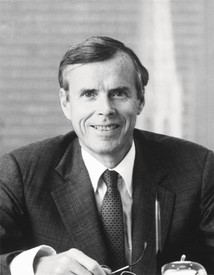
Donald Marron
Jacoba Urist profiles the legendary collector.
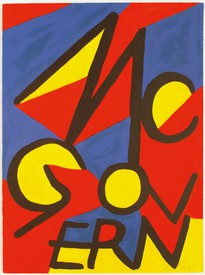
The Art History of Presidential Campaign Posters
Against the backdrop of the 2020 US presidential election, historian Hal Wert takes us through the artistic and political evolution of American campaign posters, from their origin in 1844 to the present. In an interview with Quarterly editor Gillian Jakab, Wert highlights an array of landmark posters and the artists who made them.
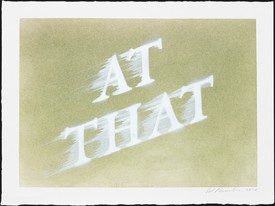
“Things Fall Apart”: Ed Ruscha’s Swiped Words
Lisa Turvey examines the range of effects conveyed by the blurred phrases in recent drawings by the artist, detailing the ways these words in motion evoke the experience of the current moment.

Artists’ Magazines
Gwen Allen recounts her discovery of cutting-edge artists’ magazines from the 1960s and 1970s and explores the roots and implications of these singular publications.
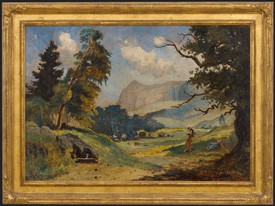
Eilshemius and Me: An Interview with Ed Ruscha
Ed Ruscha tells Viet-Nu Nguyen and Leta Grzan how he first encountered Louis Michel Eilshemius’s paintings, which of the artist’s aesthetic innovations captured his imagination, and how his own work relates to and differs from that of this “Neglected Marvel.”
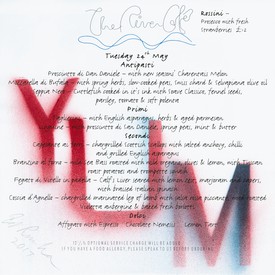
The River Café Cookbook
London’s River Café, a culinary mecca perched on a bend in the River Thames, celebrated its thirtieth anniversary in 2018. To celebrate this milestone and the publication of her cookbook River Café London, cofounder Ruth Rogers sat down with Derek Blasberg to discuss the famed restaurant’s allure.
News
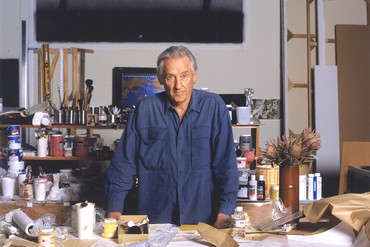
Artist Spotlight
Ed Ruscha
September 16–22, 2020
At the start of his artistic career, Ed Ruscha called himself an “abstract artist . . . who deals with subject matter.” Abandoning academic connotations that came to be associated with Abstract Expressionism, he looked instead to tropes of advertising and brought words—as form, symbol, and material—to the forefront of painting. Working in diverse media with humor and wit, he oscillates between sign and substance, locating the sublime in landscapes both natural and artificial. Ruscha’s formal experimentations and clever use of the American vernacular have evolved in form and meaning as technology alters the essence of human communication.
Photo: Kate Simon

galleryplatform.la
Ed Ruscha
Drum Skins
May 28–June 30, 2020
Gagosian is pleased to present recent paintings by Ed Ruscha online for galleryplatform.la. Fifty years ago, Ruscha purchased a set of vellum drum skins from a leather shop in Los Angeles. He has continued to collect these vintage objects, and since 2011 he has used them as canvases for the works on view in his solo exhibition Drum Skins at the Blanton Museum of Art at the University of Texas at Austin.
Installation view, Ed Ruscha: Drum Skins, Blanton Museum of Art, University of Texas at Austin, January 11–October 4, 2020. Artwork © Ed Ruscha
